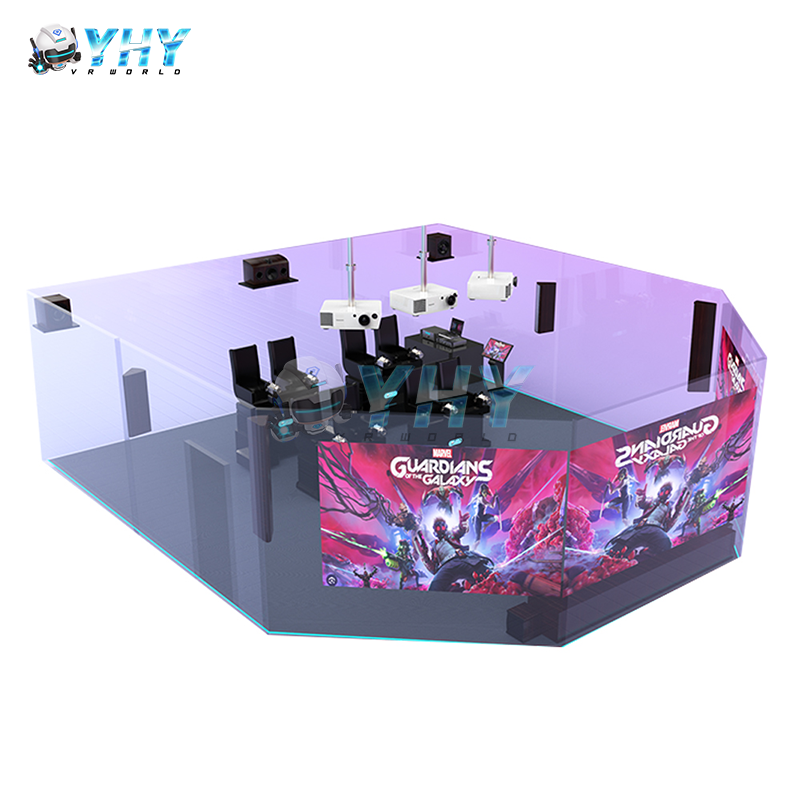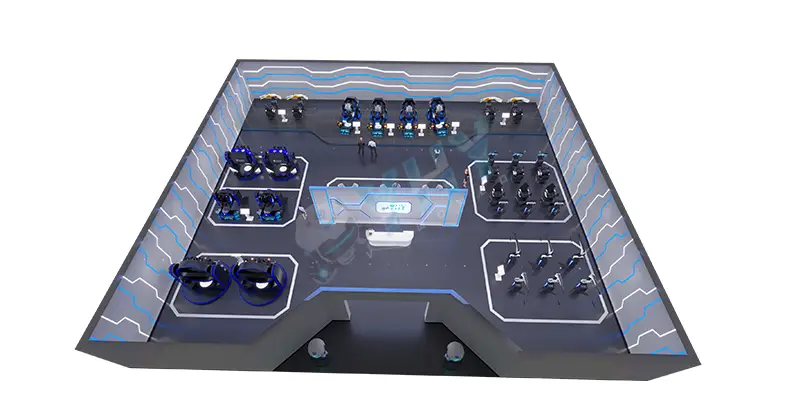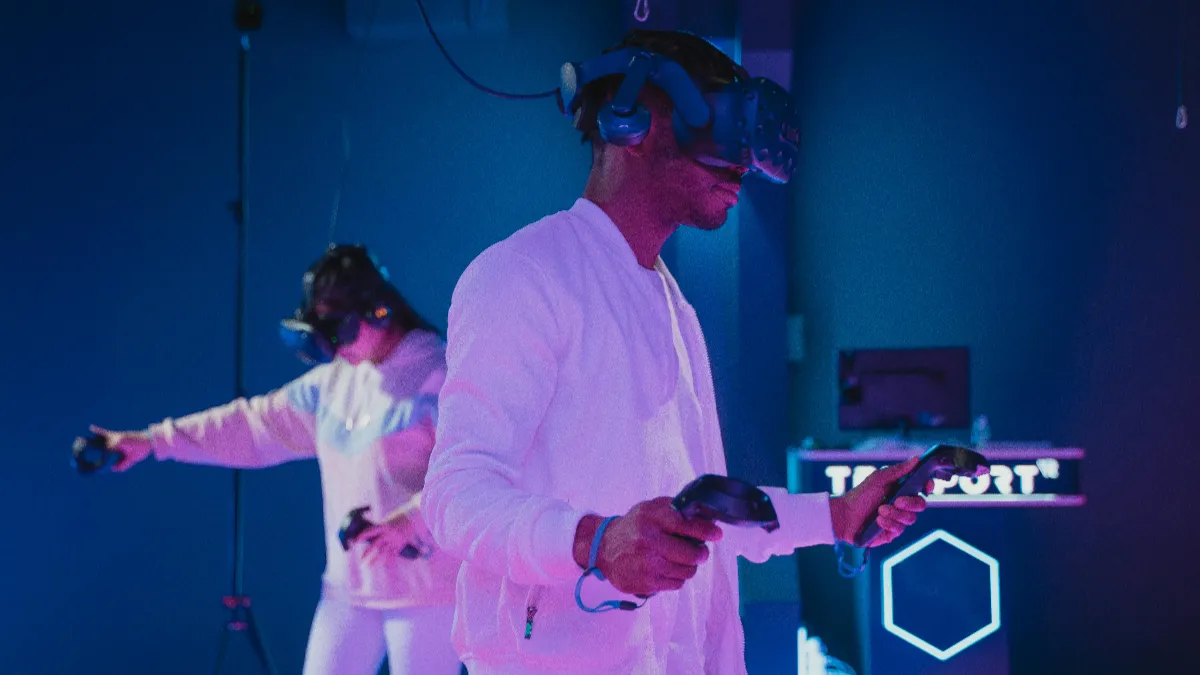Was ist 9D Virtual Reality?
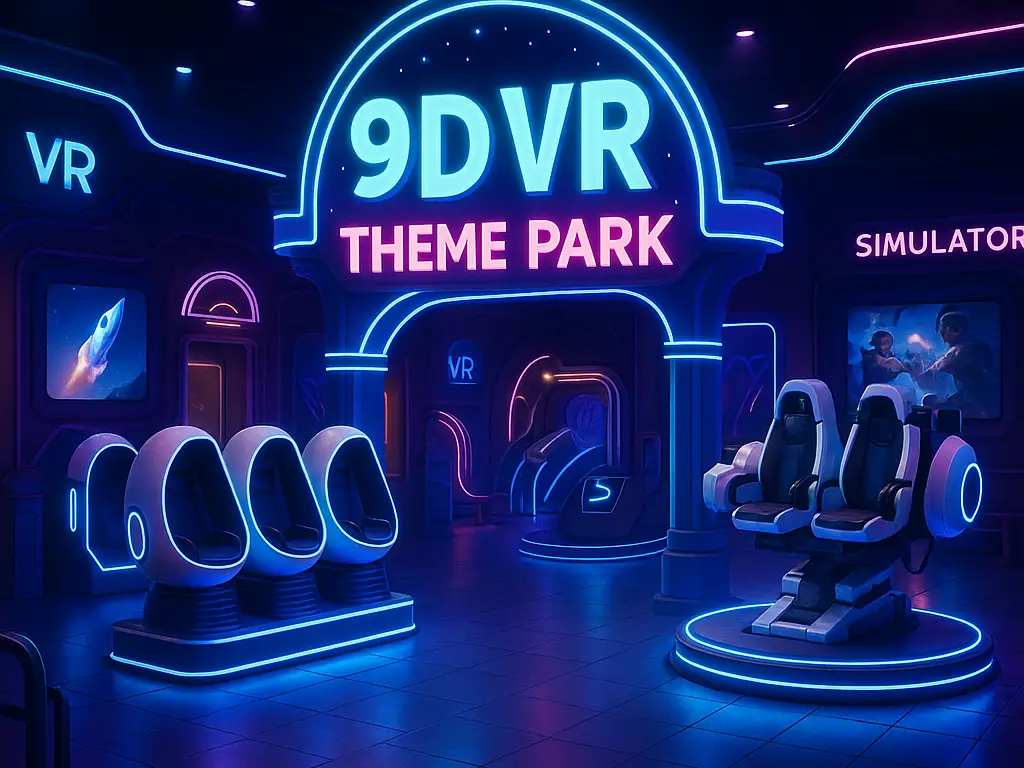
9D Virtuelle Realität bezieht sich auf eine immersive Simulationstechnologie, die virtuelle Realitätsvisuals in bewegungsbasierte Sitzplätze und sensorische Effekte realer Welt wie Wind integriert, Vibration, Duft, und Temperatur. Es geht über die traditionelle VR hinaus, indem es mehrere Eingaben kombiniert, um die Sinne des Benutzers in einer interaktiven Umgebung von 360 Grad vollständig zu verwickeln.
Das wachsende Interesse an der 9D -Erfahrung der virtuellen Realität beruht auf der Fähigkeit, Benutzer mit einem Grad an Realismus und sensorischer Stimulation zu fesseln, das beispiellos ist. Ob für Unterhaltung, Trainingssimulationen, oder experimentelles Marketing, 9D VR bietet eine skalierbare und flexible Plattform.
Wenn die Nachfrage nach eindringlicher Unterhaltung wächst, Mehr Menschen wenden sich an Suchmaschinen, um zu fragen: „Was ist 9D Virtual Reality?Dieser Artikel beantwortet diese Frage ausführlich.
Die Entwicklung des immersiven Kinos: Von 3d bis 9d VR
Die Reise zur virtuellen Realität der 9d ist in der allmählichen Entwicklung des immersiven Kinos verwurzelt. Es begann mit 3D -Filmen, die stereoskopische Grafik einführte, um die Tiefe Wahrnehmung zu ermöglichen, revolutionieren, wie sich das Publikum mit Inhalten beschäftigt. Dann kamen 4D- und 5D -Kinos, die Bewegungssitze und Umwelteffekte wie Wassernebel hinzugefügt haben, Wind, und Duft, Erstellen einer greifbareren Verbindung zur visuellen Erzählung.
Als Technologie Fortschritte, 7D- und 8D -Formate haben Interaktivität eingeführt und Benutzer dazu veranlasst, das zu beeinflussen, was auf dem Bildschirm passiert, Normalerweise über Laserpistolen oder Berührungsschnittstellen. Diese Systeme verbesserten die Unterhaltung, blieben jedoch eine Bildschirmbasis und eingeschränkt durch begrenzte Bewegungsfreiheit.
9D VR repräsentiert einen bestimmten Sprung nach vorne. Es ersetzt den statischen Bildschirm durch ein 360-Grad-VR-VR-Headset, gepaart mit einer Bewegungsplattform und synchronisierten sensorischen Effekten. Das Ergebnis ist nicht nur zu beobachten, wie sich eine Szene entfaltet, sondern sich physisch und wahrnehmungsmäßig in sie eingebettet hat.
Die Namenskonvention (3D, 5D, 9D, usw.) basiert nicht auf tatsächlichen wissenschaftlichen Dimensionen, wird jedoch häufig als Marketing -Kurzform verwendet, um die Anzahl der beteiligten Erfahrungsschichten zu beschreiben. Im Fall von 9D Virtual Reality, Es bezieht sich im Allgemeinen auf eine Kombination von 3D -Visuals, Bewegungssimulation, Umweltfeedback, und Interaktivität.
Das Verständnis dieser Entwicklung hilft zu klären, was 9D VR einzigartig macht: Es ist kein lineares Upgrade aus früheren Formaten, sondern eine Konvergenz des Kinos, Simulation, und interaktive Technologien zu einem einheitlichen, Multisensorische Plattform.
Kernkomponenten der 9D Virtual Reality
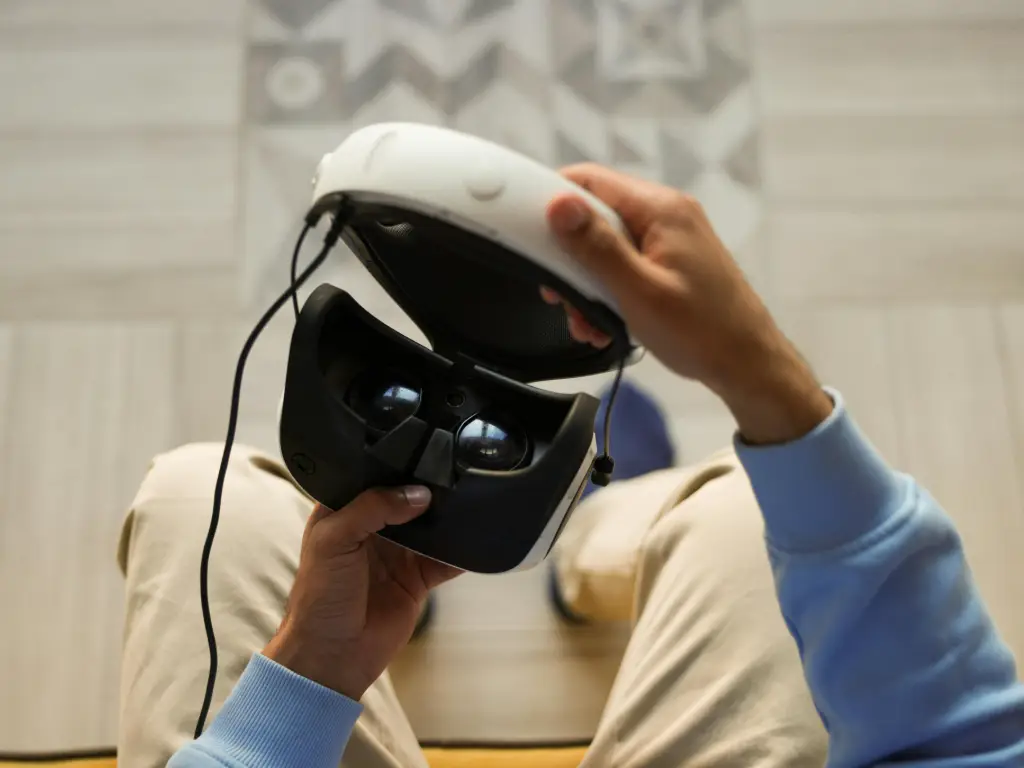
Eine echte 9D-Virtual-Realität basiert auf mehreren integrierten Komponenten, die nahtlos arbeiten, um ein multisensorisches Erlebnis zu bieten. Diese Komponenten enthalten erweiterte Bewegungsplattformen, Umwelteffektsysteme, und hochwertige visuelle und Audio-Lieferung.
Dynamische Bewegungsplattform
Die Bewegungsplattform ist der Kern eines beliebigen 9D -Virtual -Reality -Stuhl -Setups. Verwendung von elektrischen Aktuatoren und Hydrauliksystemen, Die Basis ermöglicht die Bewegung in sechs Freiheitsgraden - Pitch, rollen, gieren, heben, Anstieg, und schwanken. Diese Bewegungen replizieren reale Empfindungen wie Beschleunigung, Auswirkungen, Kippen, und fallen, Simulation von Aktivitäten wie Fliegen, Fahren, oder Achterbahnen.
Hochleistungs-9D-VR-Simulatoren synchronisieren diese Bewegungen mit den Visuals und dem Klang des virtuellen Inhalts. Die Genauigkeit und Reaktionsfähigkeit des Bewegungssystems wirken sich erheblich auf den Realismus und den Benutzerkomfort aus. Einige Setups enthalten auch Beinwege und Rückenpoker, um weitere physische Interaktion hinzuzufügen.
Multisensorische Effekte
Eintauchen zu verstärken, 9D VR -Setups integrieren Umwelteffekte. Dies kann einschließen:
- Luftdüse Wind- oder Kugelfeuer simulieren
- Nebelsprühgeräte Für Regen oder Wasserspritzer
- Duftdiffusoren Für den atmosphärischen Realismus (Z.B., Ozean, Feuer, Wald)
- Vibrationsmodule Immimik
- Wärmeemitter Explosionen oder Feuer simulieren
All diese Effekte funktionieren in Echtzeit mit dem Video und dem Audio, Schaffung einer zusammenhängenden und ansprechenden Umgebung, die mehrere menschliche Sinne in Anspruch nimmt.
VR -Headset und visuelles System
Am vorderen Ende der Benutzererfahrung befindet sich das VR -Headset, Verantwortlich für die Bereitstellung von 360-Grad-Visuals und räumlichen Audio. Führende 9D -Virtual -Reality -Systeme verwenden Headsets mit hohen Aktualisierungsraten (90Hz+), geringe Latenz, und breite Sichtfelder (bis zu 150 Grad) Um Bewegungskrankheit zu verringern und den Realismus zu verbessern.
In kommerziellen Einstellungen, Das Headset wird oft aus Sicherheit und Leistung an den Stuhl gebunden. Viele umfassen auch integriertes Audio oder sind mit Surround-Sound-Systemen für räumliches Eintauchen gepaart..
Bei Kombination, Diese Komponenten erstellen eine immersive Umgebung, die den Benutzer vollständig zusammenfasst, Machen Sie die 9D -Virtual -Reality -Erlebnis für einprägsamer und wirkungsvoller als Standard VR.
Was Sie in einer 9D -VR -Erfahrung tun können
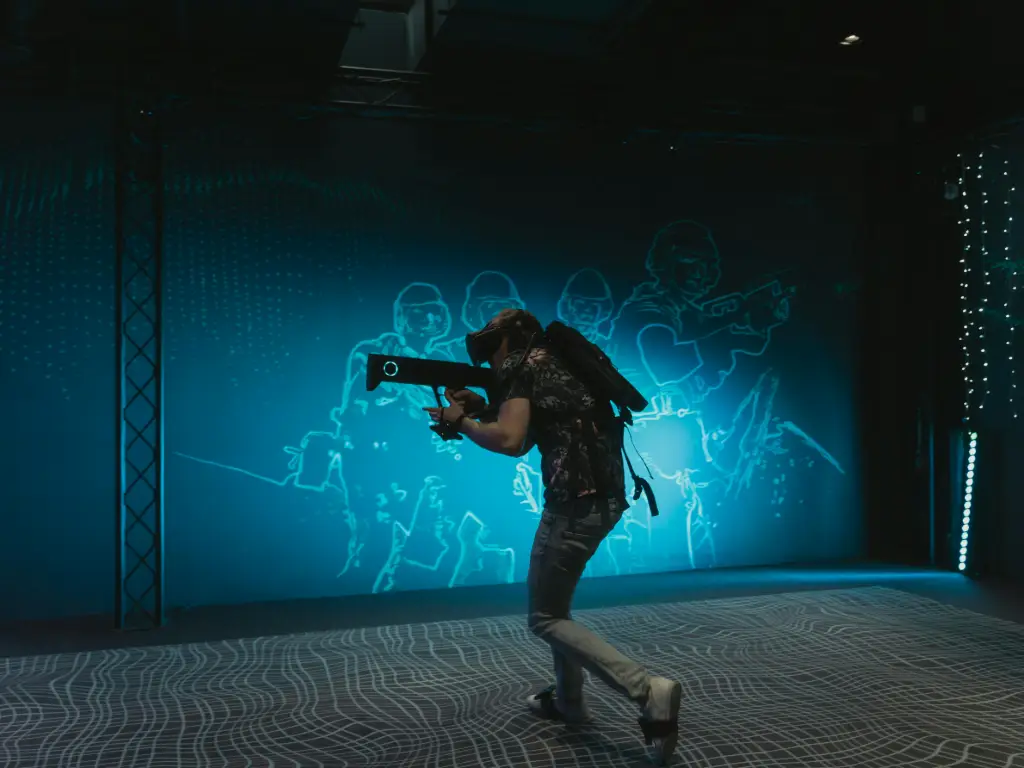
Eine 9D -Virtual -Reality -Erfahrung wurde entwickelt, um über die passive Besichtigung hinauszugehen, indem sie vollständig interaktiv anbietet, Multisensorisches Engagement. Benutzer sind nicht nur Zuschauer - sie werden Teilnehmer in der virtuellen Welt. Eines der häufigsten Formate ist die Dreharbeiten zu Spielen, wo Benutzer eine VR -Waffe behandeln und physisch auf virtuelle Feinde reagieren. Die Bewegungsplattform und die sensorischen Effekte simulieren den Rückstoß, Auswirkungen, oder Explosionen in Echtzeit, Verbesserung des Realismus.
Über actionbasierte Inhalte hinaus, Viele 9D -VR -Szenarien enthalten interaktive Auswahlmöglichkeiten. Benutzer können die Handlung beeinflussen, indem sie verschiedene Pfade oder Ergebnisse auswählen, Erstellen einer dynamischen und personalisierten Erzählung. Diese Interaktivität erhöht den Wiederholungswert und das Eintauchen.
Eine weitere wichtige Funktion ist das Szenenschalter, Ermöglicht den Benutzern, sich nahtlos zwischen verschiedenen Umgebungen zu bewegen, z.. Kombiniert mit reichen Handlungssträngen, Dies unterstützt ein tieferes Erzählungstauch und das emotionale Engagement.
Was die 9D -Virtualrealität wirklich von der traditionellen VR unterscheidet, ist die Integration des physischen Feedbacks. Mit synchronisierter Bewegung, Wind, Vibration, und andere Effekte, Die Erfahrung fühlt sich greifbar an. Diese Mischung aus Interaktivität und realen Reizen macht 9D VR zu einer herausragenden Plattform für immersive Unterhaltung.
Typische Anwendungsfälle und Geschäftsanwendungen
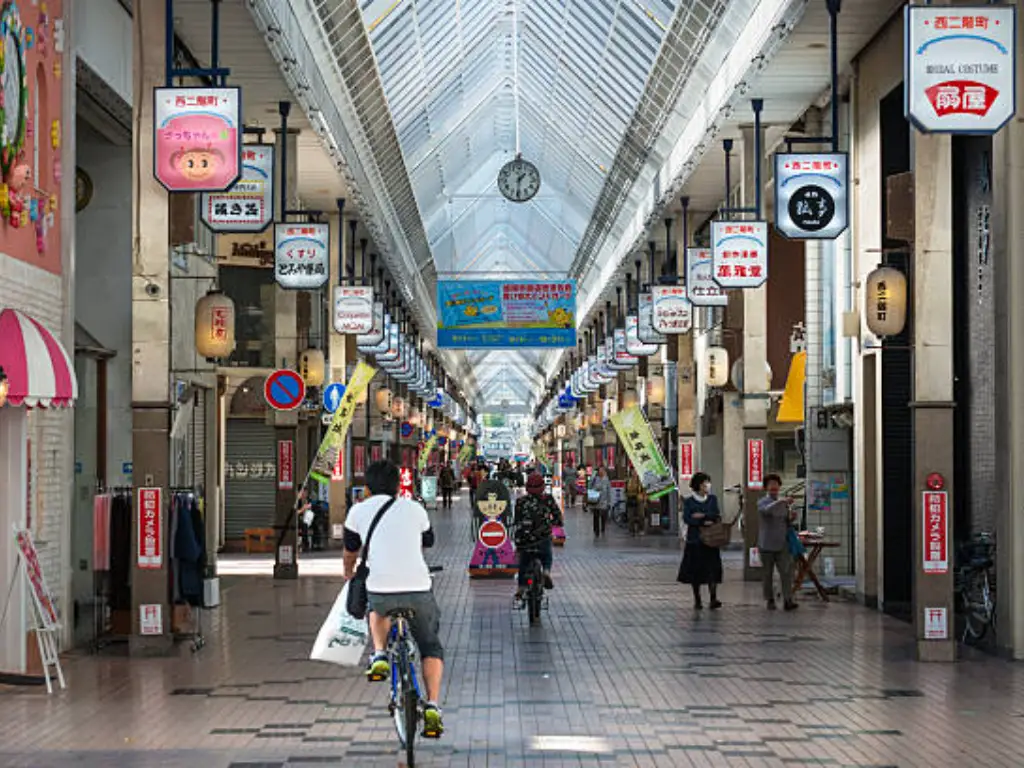
Die Vielseitigkeit der 9D -Virtual -Realität macht es zu einer sehr attraktiven Lösung für eine Reihe von Branchen, vor allem in standortbezogener Unterhaltung (Lbe). Unternehmen, die ein hohes Engagement für niedrige Betriebskosten suchen, finden häufig 9D VR ein profitables Modell.
- Arkaden und Einkaufszentren: Hochverfuhr-Veranstaltungsorte verwenden 9D-Virtual-Reality-Stühle, um begehbare Kunden anzulocken. Diese Einheiten können markiert oder tokenisiert werden, Mit durchschnittlichen Spielzeiten von 3 bis 7 Minuten - genug zu beeindrucken, ohne Müdigkeit zu verursachen.
- Themenparks und Attraktionen: VR -Themenparks Integrieren Sie 9D -Virtual -Reality -Simulatoren als eigenständige Attraktionen oder zusätzliche Erfahrungen in physische Fahrten. Ihr kleiner Fußabdruck macht sie ideal für den Innenbereich.
- Kinos und VR -Theater: Viele Theater haben 9D Virtual Reality -Kino -Setups übernommen, um Kurzfilmangebote zu verbessern. Dies fügt Wert hinzu und schafft wiederholtes Geschäft.
- Messen und Ausstellungen: Vermarkter verwenden 9D VR, um Produktdemos anzubieten, Virtuelle Fabriktouren, oder Brand -Geschichtenerzählen mit maximalem Benutzer Engagement.
- Ausbildung und Ausbildung: Obwohl weniger verbreitet, Sektoren wie Verteidigung, Luftfahrt, und Healthcare Explore 9D VR für hochwirksame Simulationen. Die Bewegung und das Feedback der Umwelt machen es nützlich für das Muskelgedächtnis und das Situationsbewusstseinstraining.
Indem Sie eine Mischung aus Nervenkitzel anbieten, Eintauchen, und Rentabilität, 9D VR wird zu einer praktikablen Lösung für Geschäftsinhaber, die mit Technologie innovativ sind.
Vorteile und Einschränkungen von 9D Virtual Reality
Die Vorteile der virtuellen 9D -Realität liegen in seiner Fähigkeit, multisensorisch zu liefern, Hochwirkende Erfahrungen innerhalb eines kompakten und relativ erschwinglichen Systems. Jedoch, Wie alle Technologien, Es hat Einschränkungen, die anerkannt werden müssen.
Vorteile:
- Volles sensorisches Engagement: Stimuliert den Anblick, Klang, berühren, und Bewegung
- Hoher Unterhaltungswert: Appelle sowohl Gelegenheitsnutzern als auch auf Nervenkitzel-Suchende
- Compact Setup: Erfordert weniger Platz als große Fahrgeschäfte
- Schneller ROI: Vor allem in Arcade- und Kinoumgebungen
- Niedrige Lernkurve: Einfach für neue Benutzer können sich mit minimaler Anweisungen befassen
Einschränkungen:
- Inhaltsabhängigkeit: Die Qualität der Erfahrung hängt vom verfügbaren Inhalt ab
- Kurze Dauer: Die Erfahrungen betragen normalerweise 3–10 Minuten
- Reisekrankheit Risiko: Ein kleiner Prozentsatz der Benutzer kann sich schwindelig anfühlen
- Wartungsanforderungen: Die bewegenderen Teile, Je höher die Wartungsbedürfnisse
Das Verständnis beider Seiten der Gleichung hilft Unternehmen, fundierte Entscheidungen zu treffen. Für Verbraucher, Es stellt sicher, dass die Erwartungen mit der Realität übereinstimmen.
Wie die VR -Motion -Simulator -Technologie die 9D VR -Erfahrung verbessert
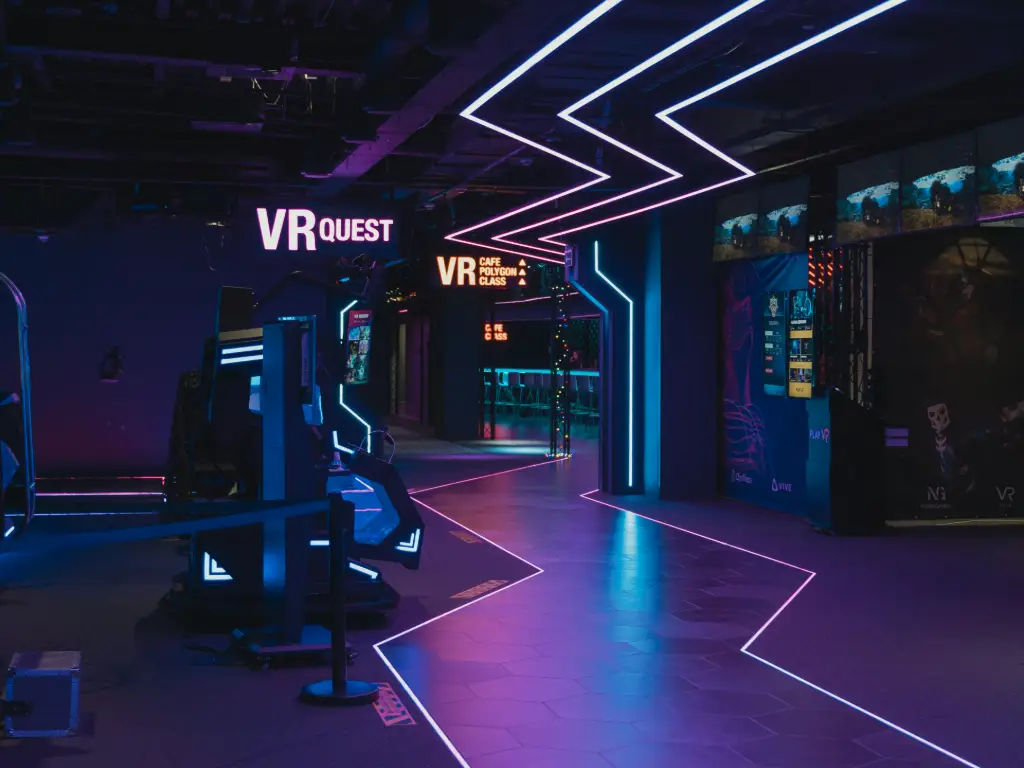
Im Herzen jeder wirkungsvollen 9D Virtual -Reality -Erfahrung ist ein gut enginierter VR-Bewegungssimulator. Diese Technologie bietet die physische Bewegung, die visuelle Inhalte zum Leben erweckt, Ermöglichen, dass Benutzer Beschleunigung spüren, Richtungsänderungen, und Umweltinteraktionen synchron mit dem, was sie durch das VR -Headset sehen und hören. Eine hochwertige Bewegungsplattform ist für die Bereitstellung des Realismus und des Eintauchens, die 9D VR definieren, unerlässlich.
Fortgeschrittene VR -Bewegungssimulatoren erhöhen die 9D -Erfahrung, indem sie präzise anbieten, Echtzeit-Feedback durch eine Kombination aus dynamischer Bewegung und Umwelteffekten. Der Simulator fungiert als physische Brücke zwischen dem Benutzer und der virtuellen Welt, Digitale Stimuli in Ganzkörper-Empfindungen übersetzen-wie plötzliche Tropfen, Vibration, oder laterale Verschiebungen - sowohl Eintauchen als auch emotionale Reaktion verbessern.
Nahlose Bewegungsintegration mit multisensorischen Merkmalen wie Wind, Duft, Nebel, und haptisches Feedback stellt sicher, dass sich jeder Moment in der VR -Erzählung authentisch anfühlt. Eine reaktionsschnelle und stabile Bewegungsplattform verbessert auch den Benutzerkomfort und reduziert die Bewegungskrankheit, Machen Sie es für ein breiteres Publikum geeignet. In kommerziellen Anwendungen wie 9D Virtual Reality -Kinos oder Gaming -Arenen, Die Zuverlässigkeit und Flexibilität des Simulators spielen eine Schlüsselrolle sowohl für die Benutzerzufriedenheit als auch für die Geschäftsleistung.
Warum unsere Bewegungsplattform einen Unterschied macht
Als Hersteller spezialisiert auf VR -Bewegungssimulatoren, Wir verstehen die entscheidende Rolle, die Hardware bei der Bereitstellung einer authentischen 9D -Virtual -Reality -Erfahrung spielt. Off-the-Shelf-Plattformen haben oft mit der Genauigkeit der Synchronisation zu kämpfen, Ansprechzeit, und langfristige Haltbarkeit. Unser VR -Bewegungssimulator fällt durch die Verwendung der proprietären 3DOF -Technologie auf, das liefert glatter, Genauere Bewegungssteuerung als herkömmliche Systeme. Dies sorgt für jede Neigung, Schicht, und Vibration ist genau festgelegt, um der virtuellen Umgebung zu entsprechen, was zu einer eindringlicheren und glaubwürdigeren Erfahrung führt.
Unsere fälligen konstruierten Bewegungsplattformen sind mit gestaltet mit:
- Präzisionsbewegungsalgorithmen Für realistische und reibungslose Übergänge
- Aktuatoren für Industriequalität Diese unterstützt intensive tägliche Operationen
- Modulare Architektur Das ermöglicht eine einfache Integration von Luft, Duft, oder Wärmeeffekte
- Ergonomisches Design Sicherheit gewährleisten, Komfort, und Zugänglichkeit für alle Benutzer
In Kombination mit dem richtigen Inhalt, Unsere Simulatoren können das volle Potenzial des XD -Virtual -Reality -Kinos freischalten, Erhöhen Sie sowohl Unterhaltung als auch kommerziellen Wert.
Wir bieten auch End-to-End-Support für Kunden, einschließlich Content -Partnerschaft, Wartungstraining, und lokalisierte Setup-Planung-die Vermittlung Ihrer Investition liefert langfristigen Erfolg.
Endgültige Gedanken - ist 9D Virtual Reality, die den Hype wert ist?
Also, Was ist in der heutigen Unterhaltungslandschaft wirklich eine virtuelle Realität von 9D, die wirklich wert ist? Aus der obigen Analyse, Es ist klar, dass 9D VR eine starke Mischung aus Eintauchen bietet, Interaktion, und sensorische Stimulation. Es ist mehr als nur ein Marketingbegriff-es ist eine Konvergenz von Technologien, die darauf abzielen, Erfahrungen auf der nächsten Ebene zu schaffen.
Es kann zwar nicht bald zu Hause oder mobiler VR ersetzt werden, seine Auswirkungen auf standortbezogene Unterhaltung, Erfahrungsmarketing, und Simulation ist sowohl messbar als auch skalierbar.
Für Verbraucher, 9D Virtual Reality -Erlebnisse bieten etwas Denkwürdiges und Aufregendes. Für Betreiber und Investoren, Es ist ein potenziell hoher Margen, Hochwertiges Geschäftsmodell-insbesondere wenn sie von robuster Hardware betrieben und von zuverlässigen Herstellern unterstützt werden.
Wenn Sie überlegen, diesen Raum einzugeben oder Ihr aktuelles Setup zu verbessern, Wir sind hier, um Ihnen dabei zu helfen, ein System zu entwerfen und bereitzustellen, das sowohl Ihren Geschäftszielen als auch Ihren Benutzererwartungen entspricht.

